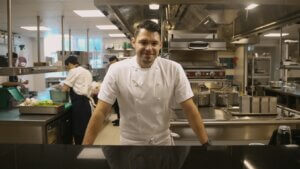If you want to treat yourself to world class cuisine served in stylish surroundings with service that’s second to none, how do you choose where to celebrate?
Jumping online, bloggers and rate my plate are not necessarily an accurate signpost of what’s out there. Peer review services such as TripAdvisor, Google and Zagat are all valuable, but if you want fine dining then you might want to follow the award that all high-end chefs covet… the Michelin star.
As it stands in 2020 there are 2290 restaurants with one Michelin Star, 414 restaurants with two and 113 restaurants with three… in the entire world. In Britain, there are 26,265 restaurants.
Now you can see just how special the restaurants that bear these stars are. The awards have been in existence for over 100 years, created by the French tyre manufacturer Michelin. The guide contained travel information including maps, hotels, restaurants and petrol stations.
As the years progressed the guides increased in popularity and in 1926, they began to award stars for fine dining establishments, and ten years later the criteria for the star ranking was published and it hasn’t changed a century on.
Fast forward 100 years, Michelin awards 0 to 3 stars on the basis of the anonymous reviews focusing on the quality, mastery of technique, value and consistency of the food. It’s the restaurant that is awarded the stars, not the chef, but that’s not to credit the vision of each head chef who has created the menu and cares about the provenance and the quality of each ingredient.
All Michelin restaurants are visited once every 18 months and the Michelin team rely entirely on the written submissions of its full-time staff of anonymous restaurant reviewers who all come together to discuss and decide on which restaurants will be awarded the stars. It’s a painstaking, time consuming undertaking and there is no let up on the chefs and kitchens to deliver consistently every single time.
These chefs all passionately believe that food is a connection to culture, place, and people. What their kitchens create represents regional tastes, local produce, long-held traditions and modern innovation, and above all, is a celebration of quality and flavour. Which is why they rely and invest in equipment and people who will help them to deliver their culinary vision.
Bon Appetit.




